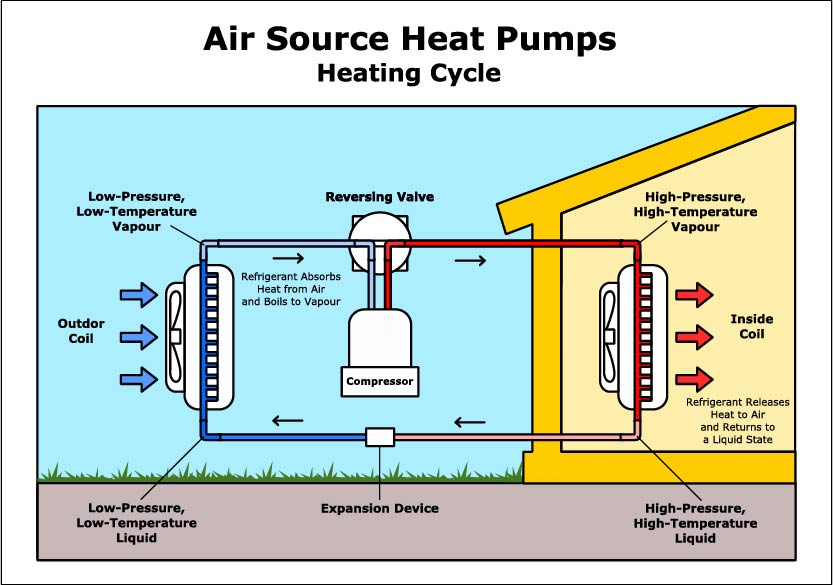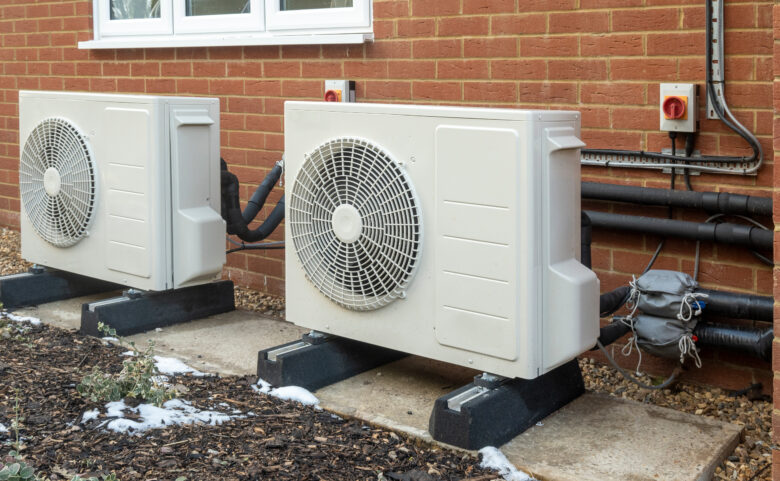SAY’s Guide to Air Source Heat Pumps
The current socioeconomic climate and energy crisis has brought into sharp focus the efficiency, or in some cases inefficiency, of individual heating systems and district heat networks associated with properties across the UK. Combined with the accelerating agenda surrounding climate change and the UK Government’s target of being Net Zero carbon by 2050, developers must now be more mindful when designing and installing or retrofitting communal heat networks.
At SAY we are seeing increases in the number of schemes being specified with Air Source Heat Pumps (ASHP), which are commonly viewed as a much cleaner, renewable alternative to gas boiler systems. ASHP systems are not the only solution, but backed by government initiatives, some of the leading energy providers in the UK are helping drive a heating revolution, and ASHP systems, particularly in urban locations, are at the heart of this change.
What are Air Source Heat Pumps and how do they work?
An ASHP can absorb heat from the air outside of a building and, using a vapour compression refrigeration process, release the air inside heating the internals of the building. Sometimes described as a reverse fridge effect, the ASHP has evolved and now offers users the opportunity to control internal temperatures within a degree centigrade, both cooling and heating their apartments. There are two types, the first being an “Air to Air” system, as described above. The second type of ASHP system is an “Air to Water” system, where heat is transferred to water-based thermal stores in a house, such as hot water tanks or radiators.

ASHP systems can be configured in a number of ways to suit the building type. For example, a high-rise block lends itself to a centralised communal heating network, where heat pumps are installed together, usually utilising roof space. Each flat or floor is fitted with a Heat Interface Unit (HIU), which is effectively a hydraulic brake in the ASHP system, giving residents individual control of their own system whilst feeding back information centrally for billing purposes.
What are the advantages and disadvantages of Air Source Heat Pumps?
There are several advantages and disadvantages to ASHP systems, but the largest barrier currently is the high costs associated with the installation of the systems. Once the systems are installed the ASHPs run off electricity only and can be more cost-efficient in the long run. However, it is the additional retrofitting activities, such as double-glazing and cavity wall insulation, that fall outside the installation costs that cause issues for homeowners and developers who are required to ensure that the efficiencies of the ASHPs are realised.
Advantages
• Low running costs / Reduced energy bills
•Less maintenance
•Better safety
•Reduces carbon emissions
•Provide cooling
•Long life-span
•Eligible for RHI scheme
•Eligible for the Green Homes Grants Schemes
Disadvantages
•High upfront costs
•Difficult to install
•Sustainability can be questioned
•Requires significant extra work if to retro-fit
•Not entirely carbon neutral
•Planning permission is required in certain cases
•Issues in cold weather
•Harder to retrofit
•Can be dangerous if there are leaks in the pipework (especially in blocks of flats)
Octopus Energy have recently stated that 67% of homes in the UK could be fitted with ASHP for less than £8,500 but the take-up has been slower than expected. Currently, only 30,000 ASHP systems are installed each year in the UK, in comparison to 1.7 million gas boilers.
What government initiatives are currently available for homeowners and developers?
As 14% of UK emissions come from domestic energy use, the UK government has earmarked domestic heating as an area of concern to overhaul. By 2025 gas boilers will be banned from newly built homes and the government hopes to phase out new gas boiler installations completely by 2035. Government initiatives, such as The Boiler Upgrade Scheme, which provides grants for homeowners, and encourages them to install low carbon heating systems, are starting to gain traction. The Government are also aiding housebuilders and developers with initiatives such as the Green Heat Network Fund (GHNF), which opened in March 2022. The fund is set up to help tackle barriers to the decarbonisation of heat networks through targeted commercialisation and construction funding. Pressure in the form of carbon offsetting funds in lieu of contributions from developers to meet the target off-site have been introduced, further encouraging developers to think greener.
By 2025 gas boilers will be banned from newly built homes and the government hopes to phase out new gas boiler installations completely by 2035.
As mentioned earlier, some energy providers, such as Octopus Energy, are leading the way in the heating system overhaul, making considerable progress in increasing the efficiency and reducing installation of costs associated with ASHP systems. As manufacturer competition in the market increases, the technology will improve, and installation costs will decrease. However, for now, capital expenditure is definitely one aspect where more work is needed to ensure the advantages as an alternative heating source are realised.
How can SAY assist?
Regardless of the heating system deployed at a scheme, if serving more than one residential unit, the system will be considered a district heating network. Any owner of the district heating network is therefore required, by law, to comply with the Heat Network (Metering and Billing) Regulations 2014, as amended in 2020. SAY have previously advised clients on all aspects of this and are well versed in the management solutions available to landlords of heat networks, helping ensure compliance and ongoing satisfaction for residents.
If you need further information about Air Source Heat Pumps or energy advice, please email george@sayproperty.co.uk

Comments are closed.